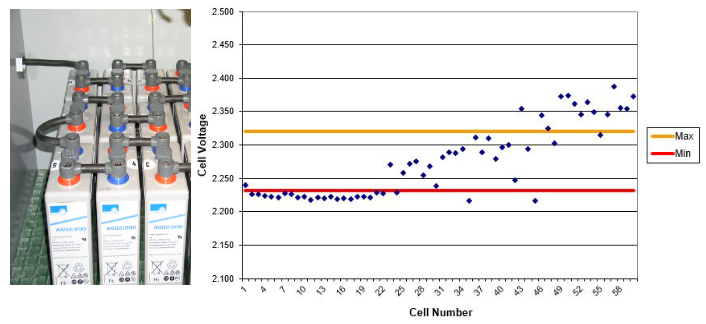One critical part of battery ownership is checking your battery. This ensures a long battery life,
offers a chance to make corrections, and protects your investment. The question is, what do you
look out for and what can you do about it?
The following is a check/record of battery cell float voltages in an actual working 4-year-old battery
120Vdc (60-cell):
Record of Battery Cell Float Voltages

The first thing you might notice is that many of the cell voltages are outside of limits prescribed by
the manufacturer. The second less obvious issue is a trend in cell voltages, with cells 1-20 being
low, cells 21-40 coming in mid-range, and cells 41-60 exhibiting high float voltage.
The less obvious issue, the trend in cell voltages is actually more of a concern since the system
was set up inside a 3-tier cabinet (enclosed to restrict access). Upon further investigation, it was
noted that the room was quite warm in the winter and that the floor was an uninsulated concrete
slab that was quite cold. It is always better to install batteries on open racks for best air circulation,
but that was not an option here. The solution here was to provide insulation under the battery
cabinet and a small circulation fan inside to re-distribute the heat.
After the above installation corrections, the battery was equalized at 2.45V/cell for 48 hours to try to
balance the cell float voltages. That was not sufficient due to the above issue and the battery was
then equalized for 96 hours at 2.45V/cell. That finally brought all the cell voltages on float charge to
within the prescribed limits, but that just shows, once battery cells go out of limits; it is that much
harder to get them back within limits. Extra scrutiny is required on a battery such as this one to
make sure it continues to do well…
For our battery selection click here
